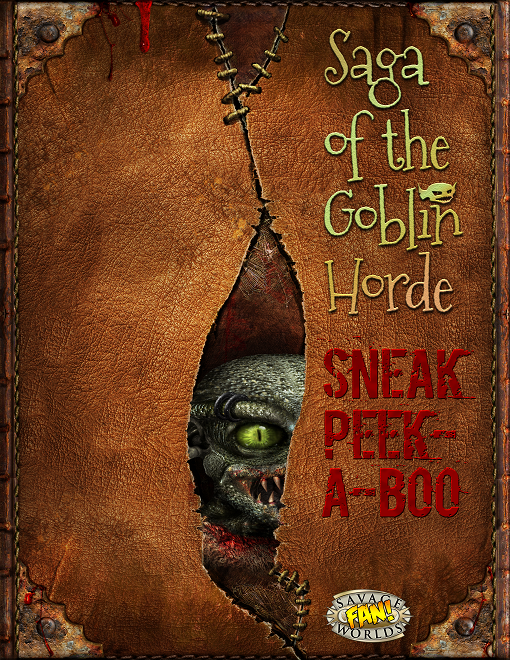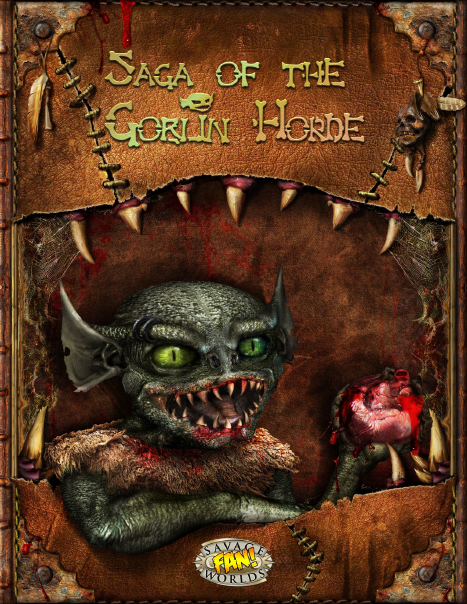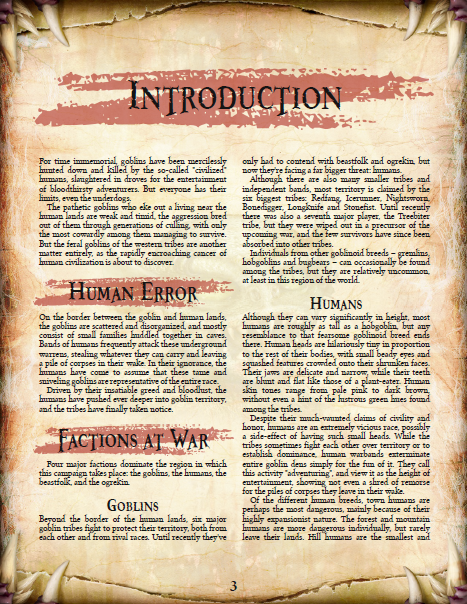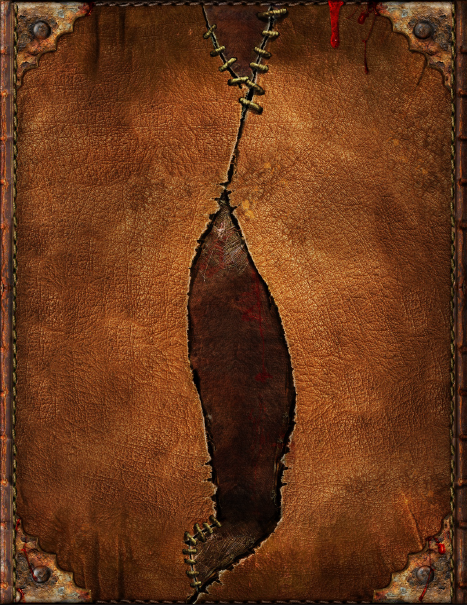
Back in March I wrote a post about the
Savage Worlds Drakonheim Companion, which I'd written for Sneak Attack Press. What I didn't mention at the time was that I'd also converted their Heroes of Drakonheim prequel adventure to Savage Worlds - or more accurately, I'd converted the
flavor of the adventure. The underlying
mechanics underwent a major rewrite, as I tied in the rules for Chases, Social Conflicts, and even a Mass Battle, as well as adding some FFF rules for the dungeon crawl in the first chapter, and a hexcrawl system for the final chapter.
While both documents are complete and have been through editing, they still need artwork. The companion is around 14K words while the adventure is about 25K words, so the two books will require quite a lot of art in order to look good. Sneak Attack Press have therefore decided to run a short Kickstarter campaign to fund the artwork.
In the lead-up to the Kickstarter, they're also releasing some previews, and the first covers necromancy, including two of the new Hindrances (Charnel Taint and Morbid Obsession) and three Edges (Channel the Dead, Gray Adept and Spectral Ritualist), as well as a look at the rules for Sentient Undead.
But while I'm on the subject, I thought I'd also take this opportunity to talk a bit about some of the behind-the-scenes design ideas.
Skeletons are Really Just Zombies in Flesh Suits
The skeleton in the Savage Worlds bestiary is described as a zombie that has rotted away, however it has better stats (Pace 7 instead of 4, and +1 Agility) and loses the weakness to headshots. This raises two questions: First, why would necromancers bother using zombies instead of skeletons if the latter are superior? And second, why is the zombie vulnerable to headshots if it can survive its brain rotting away entirely?
This seems to be a bit of a genre mixup, as horror movies often have zombies that can be killed by destroying their brain. But I wanted to use the Savage Worlds Deluxe stat blocks for both types of undead, so I came up with a way to justify the discrepancy.
By default the zombie power infuses the flesh and brain with necromantic energy. This is why a zombie is vulnerable to headshots (the brain is still important). However Gray Society necromancers can spend an additional +1 PP to infuse the bones as well - the resulting undead can then be stripped of flesh (becoming a faster skeleton) or left as a "fast zombie" that isn't vulnerable to headshots.
Liches are Really Just Smart Skeletons
I've seen a number of discussions from people wanting playable liches in Savage Worlds, and if any setting deserves to have such rules, it's Drakonheim. However I wanted the rules to feel like a natural extension of undead creation, almost a side-effect, rather than as something separate bolted onto the side.
I decided to approach liches with a Gray Society secret ritual called the Rite of Dark Transcendence. Performing this ritual allows the creation of permanent undead, and if you kill the victim while using the ritual on them rather than just casting the spell on their corpse, they have a (very slim) chance of retaining their intelligence and independence. This would cover the rare cases of skeletal champions, zombie lords, and so on.
However in combination with Soul Store (a new Legendary Edge), necromancers have a much better chance of surviving the ritual intact, and the result would be very much like a traditional lich - particularly if they take the Enervating Conduit Edge as well. This concept also ties in with my observations about
Immortality and the Price of Death.
There is no explicit "lich" ability, in fact I don't use the word "lich" anywhere in the document. But if you read between the lines, it soon becomes very obvious that a skilled necromancer can become a lich by combining several of the new necromantic Edges. If they want to call themselves a "lich" or a "death knight" or whatever else, then that's their business!
Permanent Undead
Animated undead in D&D are permanent until destroyed, and as the Drakonheim adventure was originally written for D&D, permanent undead are an important part of the setting. But in Savage Worlds, the zombie power only lasts for 1 hour, or d6 hours on a raise, or a full day on two raises. That's simply too short for Drakonheim - and even if we'd used the Necromancer Edge from the Horror Companion, it would still be extremely difficult to raise an army of permanent undead.
But how powerful is a permanent undead, really? If provided with weapons and armor, they're a bit better than a standard soldier, but not by much. The Gray Society didn't make a difference to the defense of the city because its undead were powerful, it made a difference because there just weren't enough living troops to man the walls. If there had been a mercenary company nearby, someone with Filthy Rich could just have hired them instead, with the added bonus of avoiding the social fallout that resulted from the use of undead.
So I decided to approach the problem from that perspective - instead of paying money for a mercenary, you pay money for spell components which are used to make the undead permanent. Then it's just a matter of working out the price.
During character creation you start with $500, and can triple that amount for 2 points (the same as an Edge), or by taking the Rich Edge. So although I would never allow someone to simply purchase Edges with cash, as a very rough guideline for balancing purposes one could argue that an Edge is worth approximately $1000.
The Followers Edge grants 5 minions, and you can take soldiers if you like, so one might extrapolate that a soldier is worth $200. Note that while Followers is a Legendary Edge, Legendary Edges are not usually any stronger than other Edges, their main advantage is that their benefits stack.
But to come back to undead: I decided to set the cost at $100 per PP. That means a permanent zombie costs $300, while a permanent skeleton costs $400. That's more expensive than might be suggested by the Followers Edge, but still quite affordable. It also explains why the Gray Society use both zombies and skeletons; the former are cheaper, but if a body has rotted too much then the more expensive ritual is necessary.
Controlling Undead
I also placed limits on how many undead can be controlled at once - by default it's half your Spirit die, but there are three Edges which double the number (in addition to each providing other necromantic abilities), so if you have all three you can control a number of undead equal to four times your Spirit (which, not coincidentally, is exactly the same number as the Savage Worlds lich).
This does mean a necromancer PC could potentially have their own private army, but that's hardly a unique issue - a character with the Noble Edge can already start with their own small army, just as a character with Filthy Rich can hire one.
This solution also indirectly explains how the city watch are able to control undead and use them in their patrols, which is something they're described as doing in the setting book.
Permanent Wards
The second chapter of the Heroes of Drakonheim adventure has an encounter with a group of undead trapped by a magical ward. While it would probably have been fine to handwave the ward as "a special NPC ability", I personally prefer it when the mechanics are clearly explained and even usable by players.
So in the above encounter, the necromancer obviously had the Spectral Ritualist Edge, and created a ward using the barrier power with a Spectral trapping.
Necromancy Edges and Trappings
When I worked on Guild of Shadows, I ran into the problem of the
Thief Edge being a no-brainer (due to its importance in an urban stealth-based setting). I worked around this issue by adding two alternatives, Highwayman and Urban Ranger, so that players wanting that much-coveted +2 Stealth bonus had the choice of three different Professional Edges.
I applied the same sort of reasoning to necromancers in Drakonheim. There are three new necromancy trappings that can be applied to powers: Ectoplasm, Enervation and Spectral.
Each trapping also has its own specialist Edge (Ectoplasmic Sculptor, Enervating Conduit and Spectral Ritualist), representing the three different paths to power a necromancer can take. Although it's obviously possible to mix and match, the Edges each tie in with one of the trappings, and so they tend to encourage specialization.
Summary
Quite a lot of thought went into the design of the Savage Worlds Drakonheim Companion, and I think fans of necromancy will find a lot of useful mechanics for their games, but the companion will be of the most use when combined with the
Drakonheim: City of Bones setting book.
But don't forget to take a look at the
free necromancy preview, and feel free to share your thoughts and spread the word about the upcoming Kickstarter.
 Although my plan is to eventually move the Saga of the Goblin Horde archetypes into a primer (along with an overview of the setting and a preview of the new mechanics), I've run a bit short on time again this month. However I didn't want to miss my goal of one archetype per month, so here's the sixth archetype: the goblin pyromancer!
Although my plan is to eventually move the Saga of the Goblin Horde archetypes into a primer (along with an overview of the setting and a preview of the new mechanics), I've run a bit short on time again this month. However I didn't want to miss my goal of one archetype per month, so here's the sixth archetype: the goblin pyromancer!








